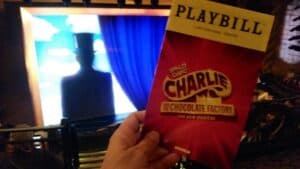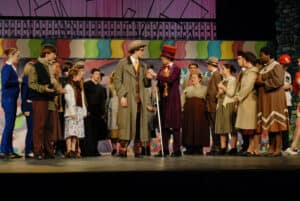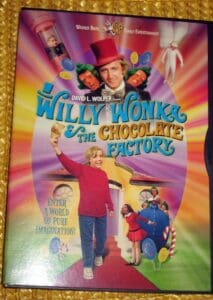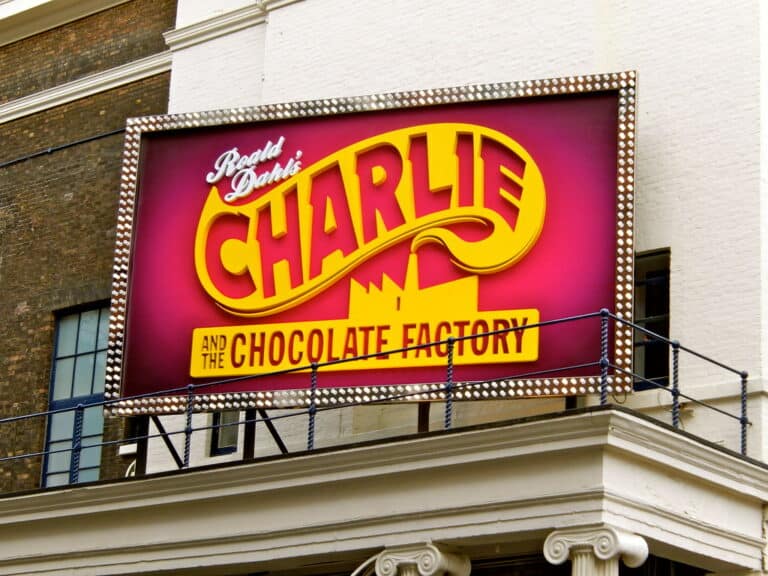Have you ever pondered the authenticity of “Charlie and the Chocolate Factory”? Does it have roots in reality? This age-old question has fascinated fans for generations. In this blog post, we’ll unwrap the layers, delving into the origins of this iconic tale. We’ll navigate the imaginative brilliance of Roald Dahl, explore real chocolate factories that could have inspired Willy Wonka, and debunk any myths about its factual basis. So, clutch your golden ticket and embark on this enchanting journey into a world of pure imagination. Is “Charlie and the Chocolate Factory” based on a true story? Let’s find out.
The Origins of Charlie and the Chocolate Factory

In the exploration of the origins of “Charlie and the Chocolate Factory,” it’s vital to understand the creative mind behind the tale, Roald Dahl. Born in 1916, Dahl’s early life was marked by unique adventures and experiences, much like the characters he would later craft. These adventures, undoubtedly, played a significant role in shaping his storytelling style. However, it’s crucial to emphasize that the narrative woven within the pages of “Charlie and the Chocolate Factory” is a product of Dahl’s boundless imagination. While his life was anything but ordinary, this whimsical and fantastical story is a testament to his storytelling prowess rather than a direct reflection of his real-life experiences.
Roald Dahl’s ability to infuse his childhood sense of wonder and adventure into his writing is what breathes life into the characters, settings, and the chocolate factory itself. While Dahl’s life may have been filled with unique events, the magical world of Willy Wonka’s factory stands as a tribute to the incredible imaginative capacity of this renowned British author. It’s a world where dreams come true, and where the extraordinary becomes reality, all through the lens of Roald Dahl’s creative genius.
Dispelling the Myth: Fiction or Reality?
It’s not uncommon for people to wonder whether “Charlie and the Chocolate Factory” is based on a true story. The whimsical elements of the story, such as the golden tickets, eccentric characters, and the mystical chocolate factory, often blur the line between fiction and reality. However, we must stress that this is a work of pure fiction. The golden tickets may have you thinking otherwise, but they are the stuff of dreams and storytelling, not of reality.
The Real-Life Willy Wonka: Cadbury and Hershey
While the story itself is a product of Roald Dahl’s vivid imagination, it’s worth exploring the real chocolate factories that might have inspired the character of Willy Wonka. Two notable names in the world of chocolate, Cadbury and Hershey, have certainly made an indelible mark on the industry. However, it’s essential to understand that Dahl’s creation was a unique blend of fantasy and imagination, not a direct representation of these real-world factories.
Roald Dahl’s Imagination
Roald Dahl’s storytelling prowess is legendary. He had a knack for weaving tales that could whisk readers away to magical worlds, whether in giant peach, witches’ covens, or fantastical chocolate factories. His childhood experiences and his own sense of wonder played a significant role in his ability to craft enchanting stories. But the chocolate factory in his tale was purely a creation of his mind, not an echo of his real life.
The Movie Adaptations

The allure of “Charlie and the Chocolate Factory” has led to multiple movie adaptations, with iconic portrayals by Johnny Depp and Gene Wilder. These films have undoubtedly contributed to the perception of the story’s authenticity. However, it’s important to remember that even the most visually captivating adaptations are a reflection of Dahl’s imaginative genius, not an assertion of real-life events.
The Enigmatic Willy Wonka
Willy Wonka, the eccentric chocolatier, is at the heart of this tale. His character is larger than life, and the story introduces us to memorable children like Veruca Salt, Augustus Gloop, and Violet Beauregarde, each with their own quirks and vices. These characters, though vivid and unforgettable, are the creations of Dahl’s mind.
The Magical Chocolate Factory
The Wonka factory is a world of pure imagination, with its chocolate river, inventing room, and oompa loompas. It’s a place where dreams come to life and where the boundaries of reality blur. While the descriptions may sound tempting, it’s crucial to remember that this magical world exists solely within the pages of a book and on the silver screen.
The Mysterious Oompa Loompas
The lovable Oompa Loompas are another intriguing element of the story. These tiny, industrious characters add a unique flavor to the tale. However, their presence in the story is a testament to Roald Dahl’s ability to create whimsical and endearing characters rather than a reflection of reality.
Willy Wonka’s World of Chocolate

Within the factory, we discover delicious treats like the Everlasting Gobstopper and the Fizzy Lifting Drinks. While these confections may seem too good to be true, that’s precisely the point. They are the products of Dahl’s boundless imagination, not the shelves of a real-world candy store.
Charlie Bucket: A Sweet Hero’s Journey
Charlie Bucket, the titular character of “Charlie and the Chocolate Factory,” holds a special place in the hearts of readers and viewers alike. His journey from humble beginnings to a whirlwind adventure inside Willy Wonka’s chocolate factory is a testament to the magic of storytelling. But what about Charlie Bucket’s character? Is he based on a real-life individual? Let’s explore his role in the story and the elements that make him unique.
Charlie Bucket’s Humble Beginnings:
While the story of Charlie Bucket is a product of Roald Dahl’s imagination, the character’s humble beginnings resonate with many readers. Born into poverty and living in a small, overcrowded house, Charlie’s life takes a remarkable turn when he finds a golden ticket. His character is a symbol of hope, resilience, and the idea that even in the face of adversity, dreams can come true. His journey inside the chocolate factory is a once-in-a-lifetime experience that captivates the imagination of readers young and old.
The Impact of Grandpa Joe: Grandpa Joe, Charlie’s grandfather, plays a pivotal role in the story as he accompanies Charlie on his adventure. Grandpa Joe’s character is a source of wisdom, support, and enthusiasm. His decision to join Charlie in exploring the Wonka Chocolate Factory adds an extra layer of charm to the tale. While Charlie’s character is fictional, the bond he shares with his grandfather is a heartwarming aspect of the story that many readers can relate to. It’s a reminder of the importance of family and the power of shared experiences.
Inside the Wonka Chocolate Factory: Secrets of the Vanilla Fudge Room

The Wonka Chocolate Factory, with its fantastical and sometimes bizarre rooms, is central to the story’s charm. One of the most intriguing locations within the factory is the Vanilla Fudge Room, where Wonka’s magical confections take shape. This room is a testament to Roald Dahl’s ability to create whimsical and enchanting settings.
Vanilla Fudge Room:
While the Vanilla Fudge Room may sound like a dream come true for those with a sweet tooth, it’s important to remember that it’s a product of Dahl’s imagination. The room, filled with mountains of fudge and a chocolate waterfall, is a testament to the sheer creativity of the author. It’s a place where the laws of reality bend, and where candy-making becomes an art form. The descriptions of the Vanilla Fudge Room immerse readers in a world of pure imagination, but it’s not a reflection of any real-life candy-making process.
Sticky Boiling Messes:
Inside the Vanilla Fudge Room, one can only imagine the sticky, boiling messes that would ensue in a room filled with rivers of fudge and cascades of chocolate. Roald Dahl’s ability to vividly describe these imaginative scenarios is part of what makes the story so engaging. The Vanilla Fudge Room represents the delightful chaos that can only exist in the realm of fiction.
The Wonka Chocolate Factory, with all its eccentricities and magical rooms, is a place where fully grown men and children alike can revel in the wonder of candy-making. While it may not be a real place, it continues to capture the hearts and minds of readers and viewers, inviting them to explore a world where the ordinary turns extraordinary.
Final Thoughts: Is Charlie and the Chocolate Factory Based on a True Story?
In the realm of literature, Roald Dahl’s “Charlie and the Chocolate Factory” stands as a testament to the boundless creativity of its author. Dahl’s fertile imagination, nurtured by his own remarkable life experiences, gave birth to a tale that continues to enchant readers of all ages. This story is a masterpiece of pure fiction, a fantastical canvas where the improbable becomes reality.
The golden tickets, the enchanting chocolate factory, and the whimsical characters are all the progeny of Dahl’s storytelling genius. These elements may seem tantalizingly real, but it’s essential to remember that they are not based on actual events or locations. Instead, they are the threads woven into the rich tapestry of an imaginative narrative, inviting us to explore the magical world that Dahl so brilliantly crafted.
Other suggested articles:
